China’s Sharing Economy of Mobility Industry: From Perspective of Industrial Ecosystem
Abstract
1. Introduction
2. Study Cases
3. Methods
3.1. Research Framework
3.2. Macro Dimension Analysis
3.3. Meso Dimension Analysis
3.4. Micro Dimension Analysis
4. Results and Discussion
4.1. Results and Discussion of Macro Dimension Analysis
- (1)
- High Density-Low Centralization Pattern
- (2)
- Low Density-High Centralization Pattern
- (3)
- High Density-High Centralization Pattern
- (4)
- Low Density-Low Centrality Pattern
4.2. Results and Discussion of Meso Dimension Analysis
- Didi Community was more focused on the sharing special car market, manifested by the fact that there are more powerful sharing special car enterprises in this community. On the contrary, Jingdong Community focused more on the strategic industrial distribution of new energy vehicles.
- Twelve automobile manufacturing enterprises are involved in two communities, which indicates that the sharing special car industry and automobile manufacturing industry have achieved good integration. Furthermore, the business model of sharing economy has been playing an important role in the transformation and upgrading of traditional automobile manufacturing industry.
- Nodes including Tencent, Ping An Insurance, CITIC Group, CMB and China Life are typical Simmel Connections, which showed that third-party platform, insurance and venture capital enterprises were playing media roles in maintaining the network connectivity of industrial ecosystem.
- The network scales of the six communities were relatively balanced, and CAR Inc. Community had a typical cross-industry development trend, while the other communities were still focusing on car rental market.
- New energy vehicles and sharing rental car industries were closely integrated, as BYD, BAIC and FDG Electric Vehicles had formed close strategic cooperative relations with sharing rental car enterprises.
- WeChat, Alipay, 58.com, BYD and Ping An Insurance were Simmel Connections.
- Although Didi, Dida, and Acting Appointment are all carpooling enterprises, there are still significant differences in their markets positioning. Didi has highlighted the orientation of the ecological development strategy to develop the sharing special car and sharing rental car business simultaneously. Dida Chuxing, whose predecessor is a carpooling enterprise, is in the period of strategic adjustment and shifting to the ecological development mode. Dida Chuxing opened up the taxi and hitchhiking market at the beginning of 2018. While Acting Appointment was still deeply focusing on the sharing carpooling market.
- Compared with the sharing special car and rental car industries, the diversity of the sharing carpooling industry was the weakest, and the cooperation between automobile manufacturers and carpooling enterprises was relatively rarely. On the contrary, insurance and venture capital enterprises existed in every community and played important roles.
- As the important link between Didi and Dida Chuxing communities, Wechat and Alipay were Simmel connections, which showed that mobile payment had an important impact on the development of the sharing carpooling.
- The development scale of the four communities was not balanced, among which Didi Community had a typical ecological development trend, while the other enterprises were focusing on sharing bus business.
- As Longan Transportation Company, Shenzhen Qiaocheng Tourism Transportation and Broad-Ocean Motor were involved, it can be seen that traditional bus transport enterprises and new energy automobile manufacturing enterprises were also seeking transformation through sharing economy.
- WeChat and Alipay were Simmel Connections, almost existing in every community, which showed that mobile payment was also playing a very important role in the development of sharing bus industry.
- The development scale of the two communities was relatively small, but the ecosystem diversity of Dingding Parking Community was stronger than that of Youwei Parking Community, which not only includes charging piles manufacturing enterprises, but also universities.
- As the industry is still in its infancy, investment prospects are not clear, so insurance and venture capital enterprises played little supporting role in the development of the industry.
- Wechat is the typical Simmel Connection.
4.3. Results and Discussion of Micro Dimension Analysis
- Didi, Wechat, and Alipay are dominant species in three sub-industries simultaneously, indicating these enterprises were hub nodes in these industrial ecosystems, with strong leadership and the ability of controlling resources.
- Mobile payment has been playing a vital role in China’s sharing mobility industry proved by WeChat and Alipay becoming the dominant species of four sub industries.
- Leading enterprises in China’s sharing mobility industry are adopting the strategy of ecological development, as Didi has become the dominant species of three sub-industries simultaneously.
- Betweeness centrality is the main factor that affects the of sharing carpooling and sharing bus industries, which indicates that the ability to control resources such as information and capital is the key factor to determine the dominant species of these two industries.
- Point centrality is the main factor that affects the of sharing special car and sharing rental car industries, which indicates that the number of network relations based on industrial cooperation is the key factor to determine the dominant species of these two industries.
- For the sharing parking industry, the differences of three centrality sub-indexes are very large, while Dingding Parking has absolute advantages in all the three sub-indexes.
- The results of Burt Structural Hole and betweenness centrality are highly consistent in the four industries except sharing bus industries.
- Dudu Bus, Dada Bus and Wechat were all key species in sharing bus industry. According to the structural hole, the index Constra of Dudu Bus and Dada Bus were both 0.143, both ranking first. The index Constra of Wechat was 0.152, ranking third. According to the betweeness centrality, the index of Wechat was 247.8, ranking first, followed by Dudu Bus and Dada Bus with the index values of 180.1 and 170, respectively. To sum up, all the three enterprises are key species.
- Some nodes are not only dominant species but also key species, including Jingdong, Amap, Atzuche, Dida chuxing, Dudu Bus, Dada Bus and Youwei Parking, which indicates these nodes not only have strong leadership and the ability of controlling key resources, but also maintain the network connectivity and integrity of sharing mobility industrial ecosystem.
5. Conclusions and Discussion
5.1. Discussion and Significance
- (1)
- Attach equal importance to development and supervision firstly and introduce the targeted and encouraging policies to protect and encourage the industrial innovation. More importantly, as the development stages, scales and modes of sharing mobility sub-industries are different. For example, the sharing special car industry has 50 nodes and 494 network connections, while the sharing parking industry only has 17 nodes and 34 network connections. Therefore, the policies should avoid the mistake that one size fits all and strengthen the classification guidance so as to promote targeted and effective industrial policies.
- (2)
- Authorities should focus on building a good industrial ecological environment from the aspects of strengthening the infrastructure construction, improving data statistics and highlighting development priorities. As the comprehensive centralities of Wechat in sharing bus industry and Alipay in sharing special car industry are 0.85 and 0.71 respectively, both two enterprises are hub nodes in the industrial ecosystem. Therefore, the development of China’s sharing economy industry should not rely on sharing enterprises solely, mobile payment enterprises, automobile manufacturing enterprises, especially new energy automobile manufacturing enterprises are all involved and playing vital roles. Furthermore, under the background of the slowdown of venture investment, the authorities should guide sharing enterprises to establish the strategic development concept of co-construction and co-governance.
- (3)
- To explore a clear and efficient profit model and cultivate entrepreneurs’ innovative spirit is the key. Driven by venture capital, China’s sharing economy has developed from scratch, as 17 insurance and venture capital enterprises in sharing special car industry, 24 enterprises in sharing rental car industry,21 enterprises in sharing carpooling industry and 16 enterprises in sharing special car industry, which occupy a large share in the ecosystem network. However, insurance and venture capital enterprises are neither dominant nor key species in sharing mobility industry, which shows that decentralized investment and the lack of rationality are also important problems for restricting the development of China’s sharing economy. Therefore, how to scientifically guide capital to the rational investment and build an incentive innovation atmosphere to cultivate entrepreneurs’ innovative spirit is the booster to the sustainable development of China’s sharing economy in the period of structural adjustment.
5.2. Limitations and Future Research
Author Contributions
Funding
Acknowledgments
Conflicts of Interest
References
- Chase, R. Sharing Economy: Restructure New Business Model; Zhejiang People’s Publishing House: Hangzhou, China, 2015. [Google Scholar]
- Alraeeini, M.; Zhong, Q.; Antarciuc, E. Analysing drivers and barriers of accommodation sharing in Dubai using the grey-DEMATEL approach. Sustainability 2019, 11, 5645. [Google Scholar] [CrossRef]
- Zhao, D.; Xue, Y.; Cao, C.; Han, H. Channel selection and pricing decisions considering three charging modes of production capacity sharing platform: A sustainable operations perspective. Sustainability 2019, 11, 5913. [Google Scholar] [CrossRef]
- Laurenti, R.; Singh, J.; Cotrim, J.M.; Toni, M.; Sinha, R. Characterizing the sharing economy state of the research: A systematic map. Sustainability 2019, 11, 5729. [Google Scholar] [CrossRef]
- The Global Sharing Economy Will Grow 20 Times in Ten Years. Available online: https://tech.qq.com/a/20150415/023543.htm (accessed on 11 December 2019).
- Annual Report on the Development of China’s Sharing Economy. Available online: http://www.sic.gov.cn /News/ 79/8860.htm (accessed on 11 December 2019).
- Didi. Website. Available online: https://www.didiglobal.com/ (accessed on 11 December 2019).
- CAR. Inc. Website. Available online: http://www.zuche.com/ (accessed on 11 December 2019).
- Analysis on the Market and Development Trend of China’s Sharing Economy in 2018. Available online: http://www.askci.com/news/chanye/20180308/100726119262.shtml (accessed on 11 December 2019).
- State Information Center. Annual Report on the Development of China’s Sharing Economy; State Information Center: Beijing, China, 2019. [Google Scholar]
- Support and Guide the Healthy Development of Sharing Economy. Available online: http://www.sohu.com/a/298715392_274290 (accessed on 11 December 2019).
- Brown, L.R. Building a Sustainable Society: Lester R. Brown a Worldwatch Institute Book; W.W. Norton: New York, NJ, USA, 1981. [Google Scholar]
- Hamari, J. The Sharing economy: Why people participate in collaborative consumption. J. Assoc. Inf. Sci. Technol. 2016, 67, 2047–2059. [Google Scholar] [CrossRef]
- Rong, C.H. Analysis on the relationship between material, credit and time-space economy of internet sharing mobility. Manag. Wold 2018, 4, 101–112. [Google Scholar]
- Guo, Q.L.; Karimi, H.A. A methodology with a distributed algorithm for large-scale trajectory distribution prediction. Int. J. Geogr. Inf. Sci. 2018, 33, 833–854. [Google Scholar] [CrossRef]
- Li, P.; Zhang, J.S. Is China’s energy supply sustainable? New research model based on the exponential smoothing and GM(1,1) methods. Energy 2019, 12, 236. [Google Scholar] [CrossRef]
- Terroso-Saenz, F.; Muñoz, A.; Cecilia, J.M. QUADRIVEN: A framework for qualitative taxi demand prediction based on time-variant online social network data analysis. Sensors 2019, 19, 4882. [Google Scholar] [CrossRef]
- Xu, Y.; Li, D. Incorporating graph attention and recurrent architectures for city-wide taxi demand prediction. ISPRS Int. J. Geo Inf. 2019, 8, 414. [Google Scholar] [CrossRef]
- Gohari, S.; Medalen, T.; Aranya, R. Exploring the impact of complex multi-Level governance structures on the societal contribution of universities to knowledge-based urban development. Soc. Sci. 2019, 8, 279. [Google Scholar] [CrossRef]
- Rappa, M. The utility business model and the future of computing service. IBM Bus. J. 2004, 43, 359–376. [Google Scholar] [CrossRef]
- Li, H.J.; Tian, Y.X.; Li, W.J. Mobile internet thinking and traditional business reengineering. China Ind. Econ. 2014, 10, 135–146. [Google Scholar]
- Luo, M.; Li, L.Y. Innovation of business model in internet era: From value creation perspective. China Ind. Econ. 2015, 1, 95–107. [Google Scholar]
- West, J.; Wood, D. Evolving an open ecosystem: The rise and fall of the Symbian platform. Adv. Strateg. Manag. 2014, 30, 27–67. [Google Scholar]
- Mikel, G.; Juan, C.M.; Jon, M.Z.E. Economic dynamics: The evolution of big internet business ecosystems, evidence for patents. Technovation 2014, 34, 177–187. [Google Scholar]
- Stökols, D. Social Ecology in the Digital Age: Solving Complex Problems in a Globalized World; Elsevier Academic Press: London, UK, 2018. [Google Scholar]
- Carroll, G.R. Ecological Models of Organization; Ballinger Publishing: Cambridge, UK, 1988. [Google Scholar]
- Shi, J.-G.; Si, H.; Wu, G.; Su, Y.; Lan, J. Critical factors to achieve dockless bike-sharing sustainability in China: A stakeholder-oriented network perspective. Sustainability 2018, 10, 2090. [Google Scholar] [CrossRef]
- Choi, J.W.; Kim, H.Y. Preparation of study on social network analysis in the sharing economy of tourism field. Indian J. Public Health Res. Dev. 2018, 9, 981–985. [Google Scholar] [CrossRef]
- Lee, J.H.; Choi, J.W.; Kim, K.Y. Segmenting Korean millennial consumers of sharing economy services on social networking: A psychographic-based approach. J. Internet Comput. Serv. 2015, 16, 109–121. [Google Scholar]
- Martin, P.F.; Florian, U.; Gohar, F.K.; Marko, S.; Andy, N.; Tobias, S. From goods to services consumption: A social network analysis on sharing economy and servitization research. J. Serv. Manag. Res. 2018, 2, 3–16. [Google Scholar]
- Gao, S.Y.; Zhang, Y.; Liu, H.B. Social network analysis to the value creation of sharing economy business model. J. Tech. Econ. Manag. 2019, 7, 79–84. [Google Scholar]
- Chen, Y.; Liu, F.Z.; Wu, J. Studying users’ interaction behaviors of sharing economic platform with 2-mode complex network analysis. Data Anal. Knowl. Discov. 2017, 1, 72–82. [Google Scholar]
- Luo, J.D. Social Network Analysis; Social Sciences Academic Press: Beijing, China, 2015. [Google Scholar]
- China Business Herald News Weekly. China’s Automobile Sharing Economy Creates 5.5 Million Jobs in Three Years; China Business Herald News Weekly, 2016. Available online: www.bbtnews.com.cn/2016/1021/165045.shtml (accessed on 11 December 2019).
- Berg, R. Analysis and Forecast Report of China’s Sharing Mobility Market in 2018. 2018. Available online: www.199it.com/archives/529731.html (accessed on 11 December 2019).
- Johnson, S.E. Ecosystem Ecology; Science Press: Beijing, China, 2018. [Google Scholar]
- Michael, B.; Colin, R.; John, L. Ecology: From Individual to Ecosystem, 4th ed.; Higher Education Press: Beijing, China, 2016. [Google Scholar]
- Zhao, D.Z.; Li, G. Development from network organization to business ecosystems. Ind. Eng. J. 2005, 1, 24–28. [Google Scholar]
- Shi, L.; Chen, W.Q.A. Industrial ecology in China: Retrospect and prospect. Acta Ecol. Sin. 2016, 36, 7158–7167. [Google Scholar]
- Liu, L.D. Internet Ecosystem; China Zhigong Publishing House: Beijing, China, 2018. [Google Scholar]
- Moore, J.F. Predators and prey: A new ecology of competition. Harv. Bus. Rev. 1993, 71, 75–83. [Google Scholar]
- Li, Q.; Jie, X.W. The value evaluation study of keystone corporation business ecosystem based on analysis of comparation between Huawei and ZTE. Sci. Tech. Prog. Policy 2012, 29, 110–114. [Google Scholar]
- Paul, H. The Ecology of Commerce; Shanghai Translation Publishing: Shanghai, China, 2001. [Google Scholar]
- Zhang, Z.; Wang, F.Y.; Zhang, Y.M. Cloud innovation and construction of internet finance ecosystem: Case study of Ali Fin-Cloud. Res. Econ. Manag. 2017, 38, 53–60. [Google Scholar]
- Stanley, W.; Katherine, F. Social Network Analysis: Methods and Handouts; China Renmin University Press: Beijing, China, 2012. [Google Scholar]
- Liu, J. Introduction to Social Network Analysis; Social Sciences Academic Press: Beijing, China, 2004. [Google Scholar]
- Grinnell, J. The niche relationship of the California thrasher. AUK 1917, 34, 427–433. [Google Scholar] [CrossRef]
- Gao, Y.B.; Wu, J.G. Lectures in Modern Ecology: VIII: Advances in Community, Ecosystem and Landscape Ecology; Higher Education Press: Beijing, China, 2017. [Google Scholar]
- Lansiti, M.; Levien, R. Keystones and Dominator: Framing the Operational Dynamics of Business Ecosystems; Estados Unidos: Boston, MA, USA, 2002. [Google Scholar]
- Burt, R.S. Structural Holes: The Social Structure of Competition; Harvard University Press: Cambridge, UK, 1992. [Google Scholar]
- Simmel, G. The Sociology of George Simmel; The Free Press: New York, NY, USA, 1964. [Google Scholar]
- Iimedia Research. Annual Development Report of China’s Sharing Mobility (2017–2018); Iimedia Research: Guangzhou, China, 2018. [Google Scholar]
- CBNData. Big Data Analysis Report of China’s Sharing Mobility Industry in 2017; CBNData: Shanghai, China, 2017. [Google Scholar]
- Núñez, C.P.; Molina, M.V.; Corpas, I.F.A.; Cortés, G.F.J. Family businesses transitioning to a circular economy model: The case of Mercadona. Sustainability 2018, 10, 538. [Google Scholar] [CrossRef]
- Yun, J.J.; Won, D.; Park, K. Entrepreneurial cyclical dynamics of open innovation. J. Evol. Econ. 2018, 28, 1151–1174. [Google Scholar] [CrossRef]
- Yun, J.J.; Won, D.; Park, K. Dynamics from open innovation to evolutionary change. J. Open Innov. Technol. Market Complex. 2016, 2, 7. [Google Scholar] [CrossRef]
- Yun, J.J.; Park, K.; Hahm, S.D.; Kim, D. Basic income with high open innovation dynamics: The way to the entrepreneurial state. J. Open Innov. Technol. Market Complex. 2019, 5, 41. [Google Scholar] [CrossRef]
- Yun, J.J.; Zheng, L. micro- and macro-dynamics of open innovation with a quadruple-helix model. Sustainability 2019, 11, 3301. [Google Scholar] [CrossRef]
- Yun, J.J.; Cooke, P.; Kodama, F.; Phillips, F.; Gupta, A.K.; Gamboa, F.J.C.; Lace, N. An open letter to Mr. Secretary general of the united nations to propose setting up global standards for conquering growth limits of capitalism. J. Open Innov. Technol. Market Complex. 2016, 2, 22. [Google Scholar]
- Yun, J.J. How do we conquer the growth limits of capitalism? Schumpeterian dynamics of open Innovation. J. Open Innov. Technol. Market Complex. 2015, 1, 17. [Google Scholar] [CrossRef]
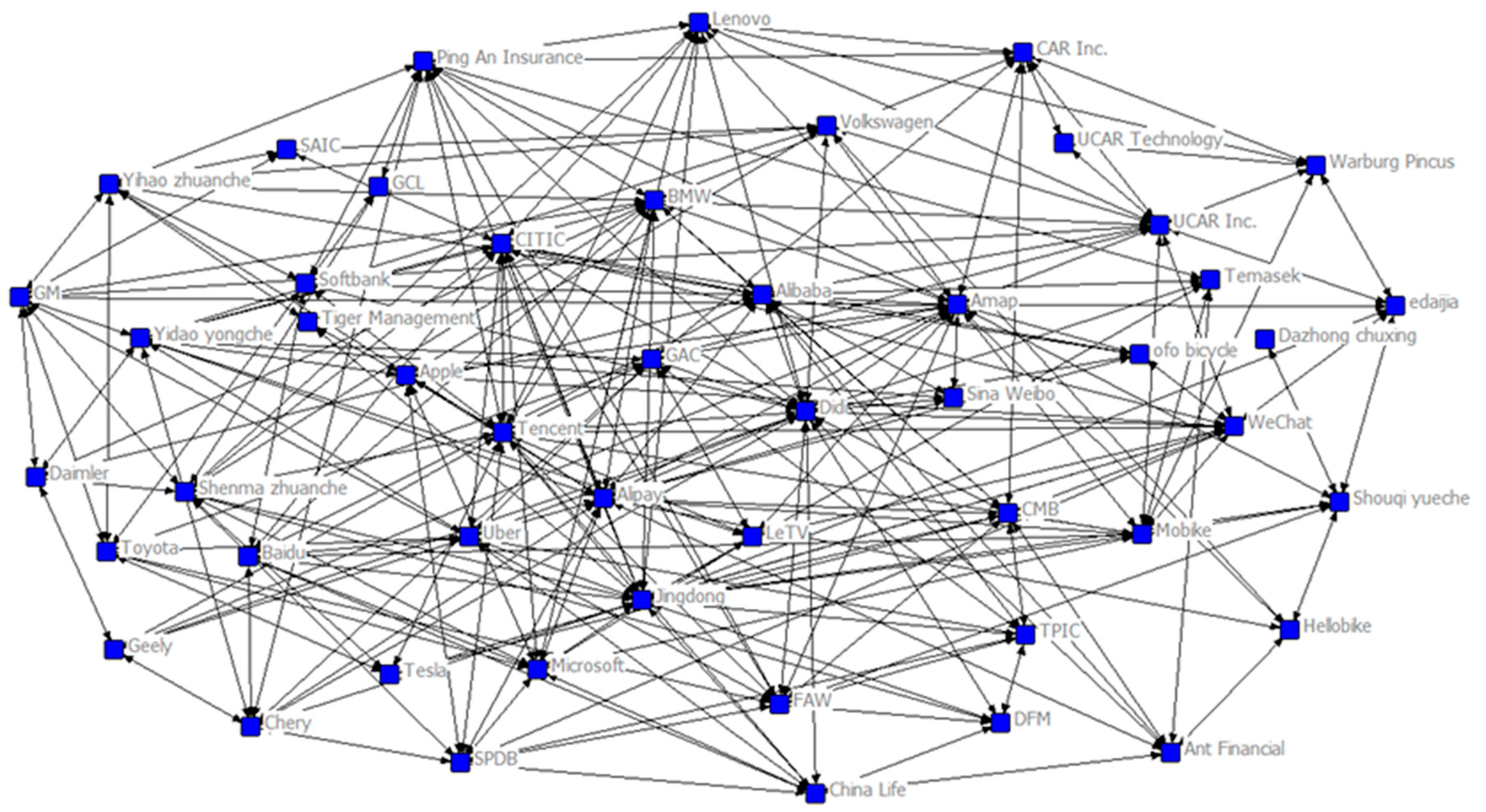
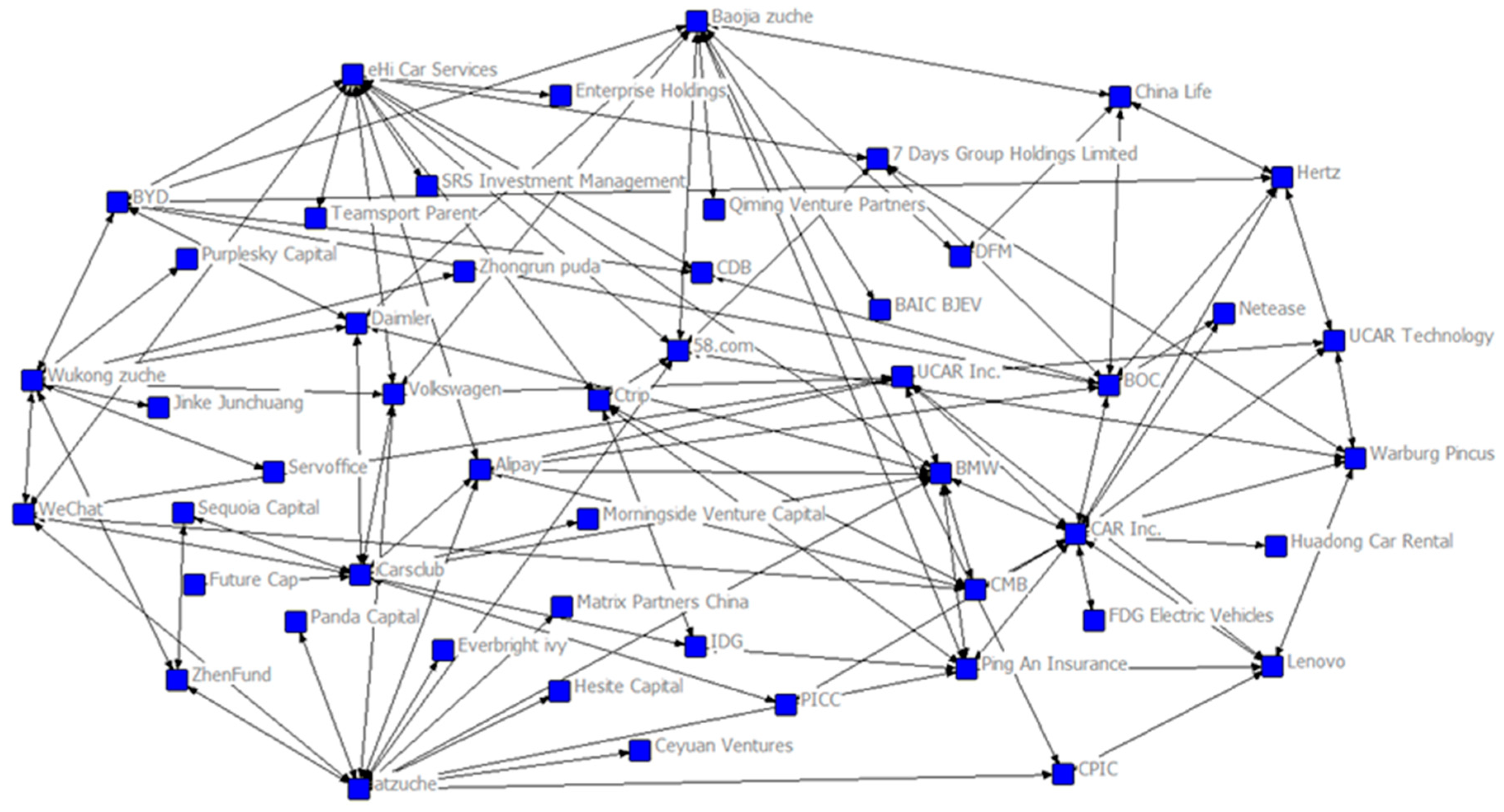

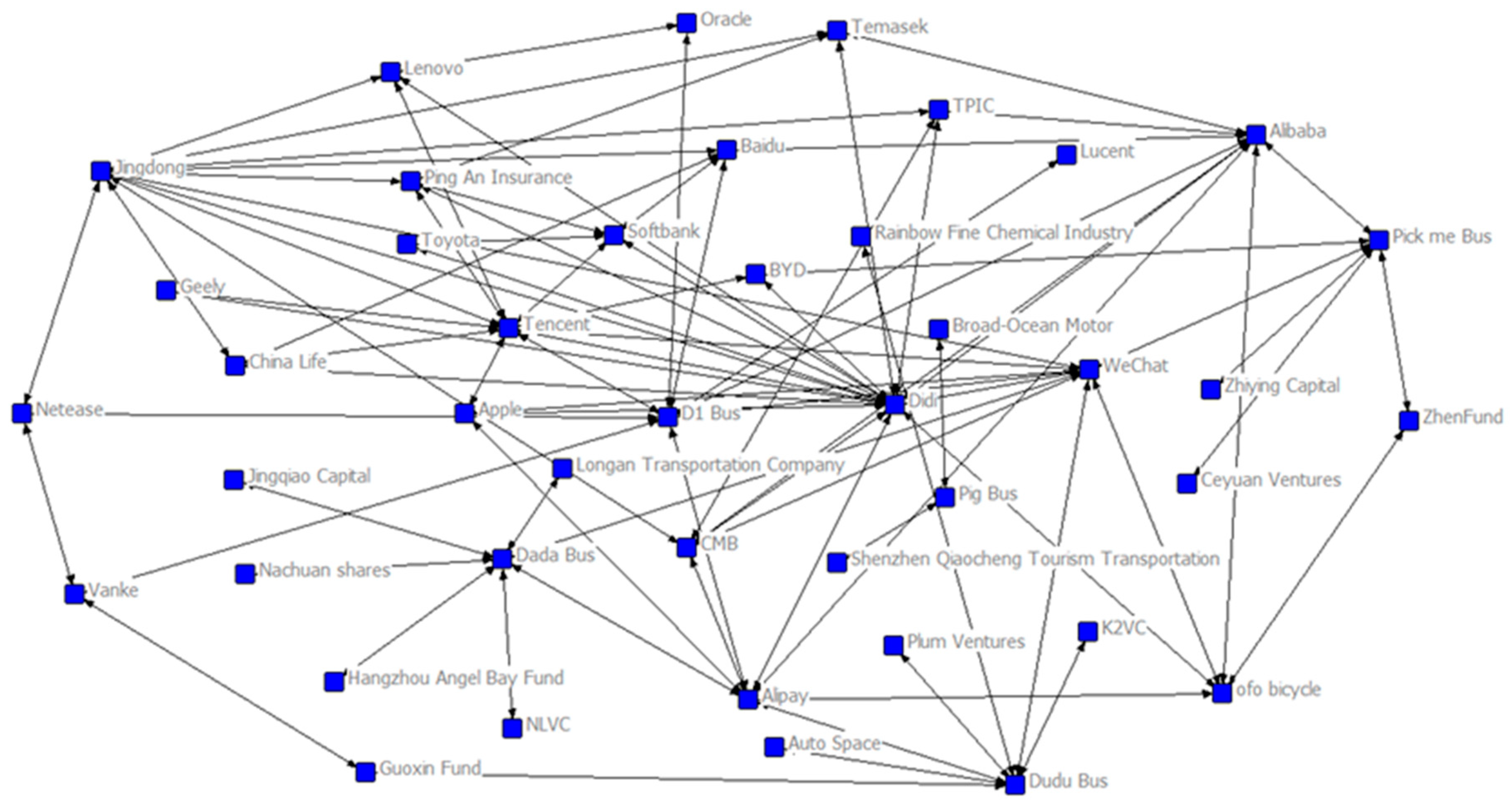
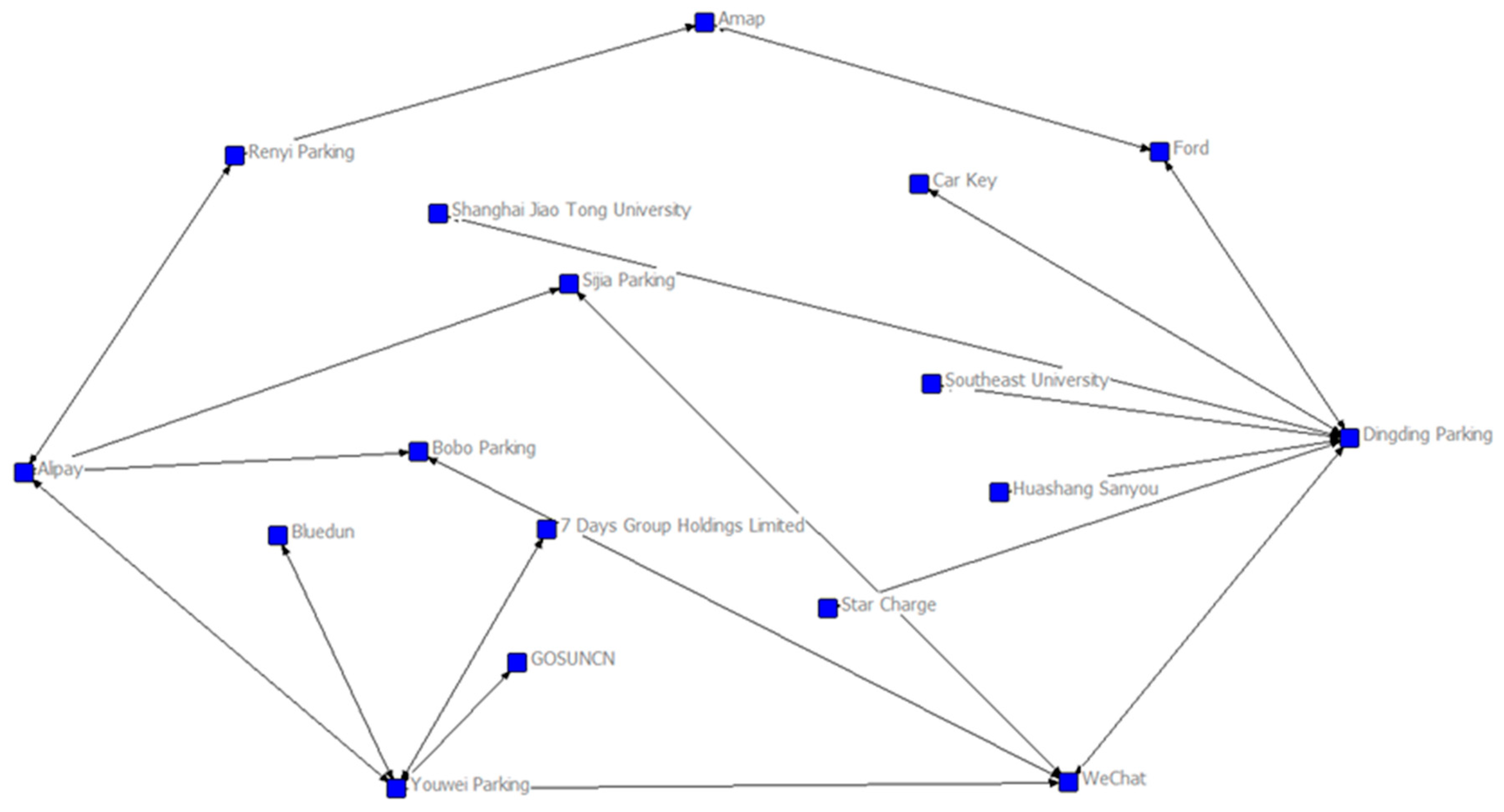
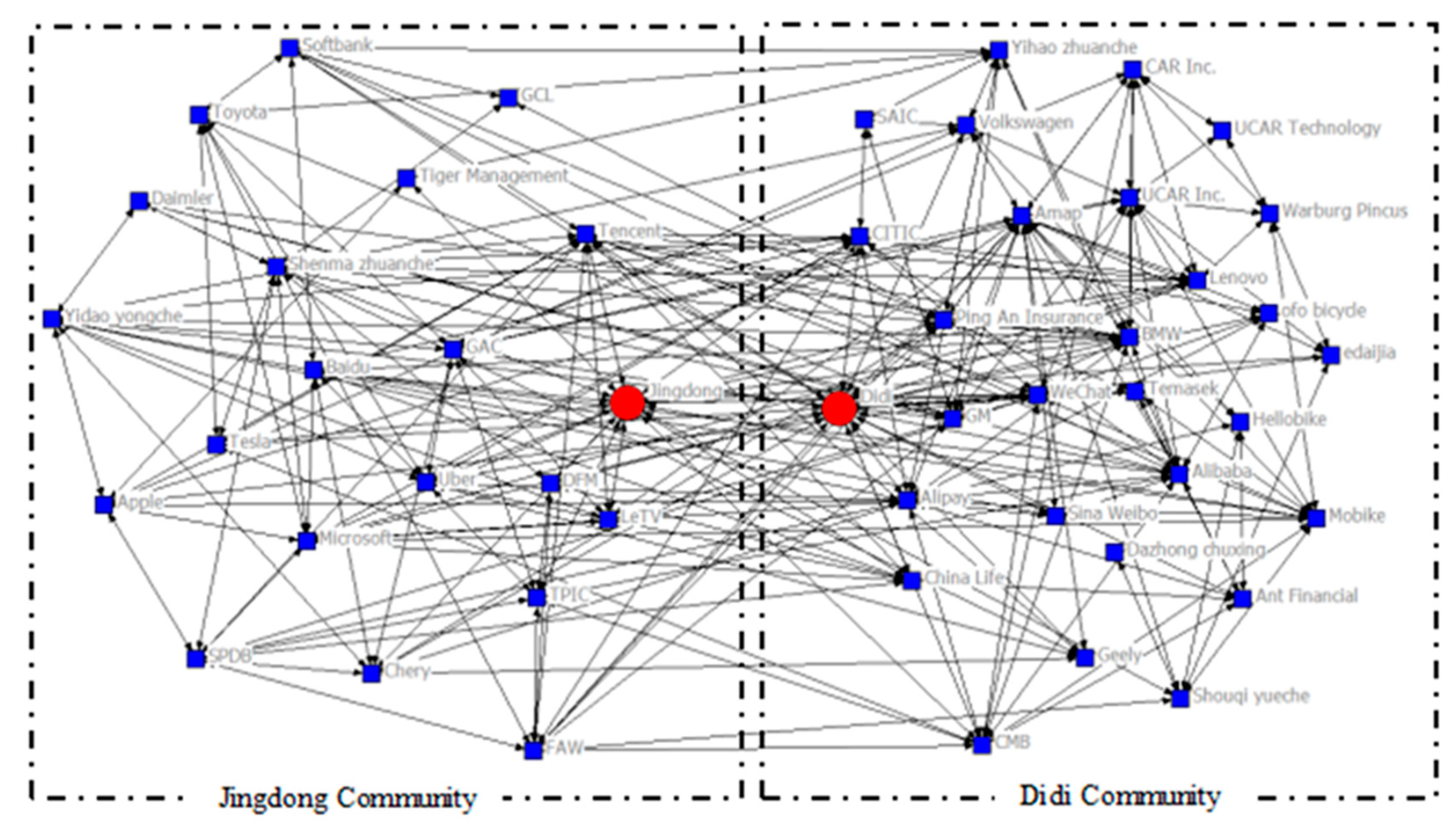


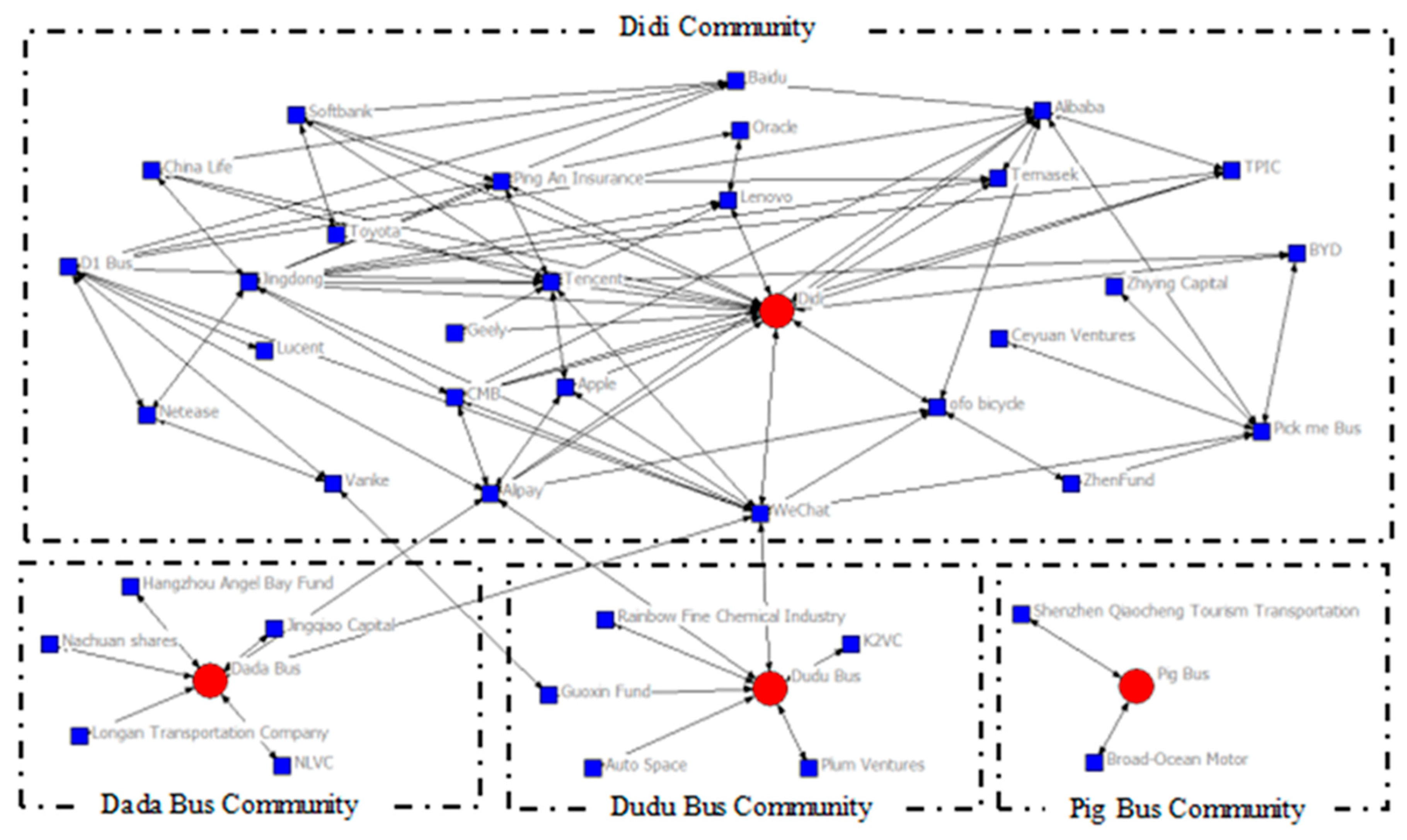
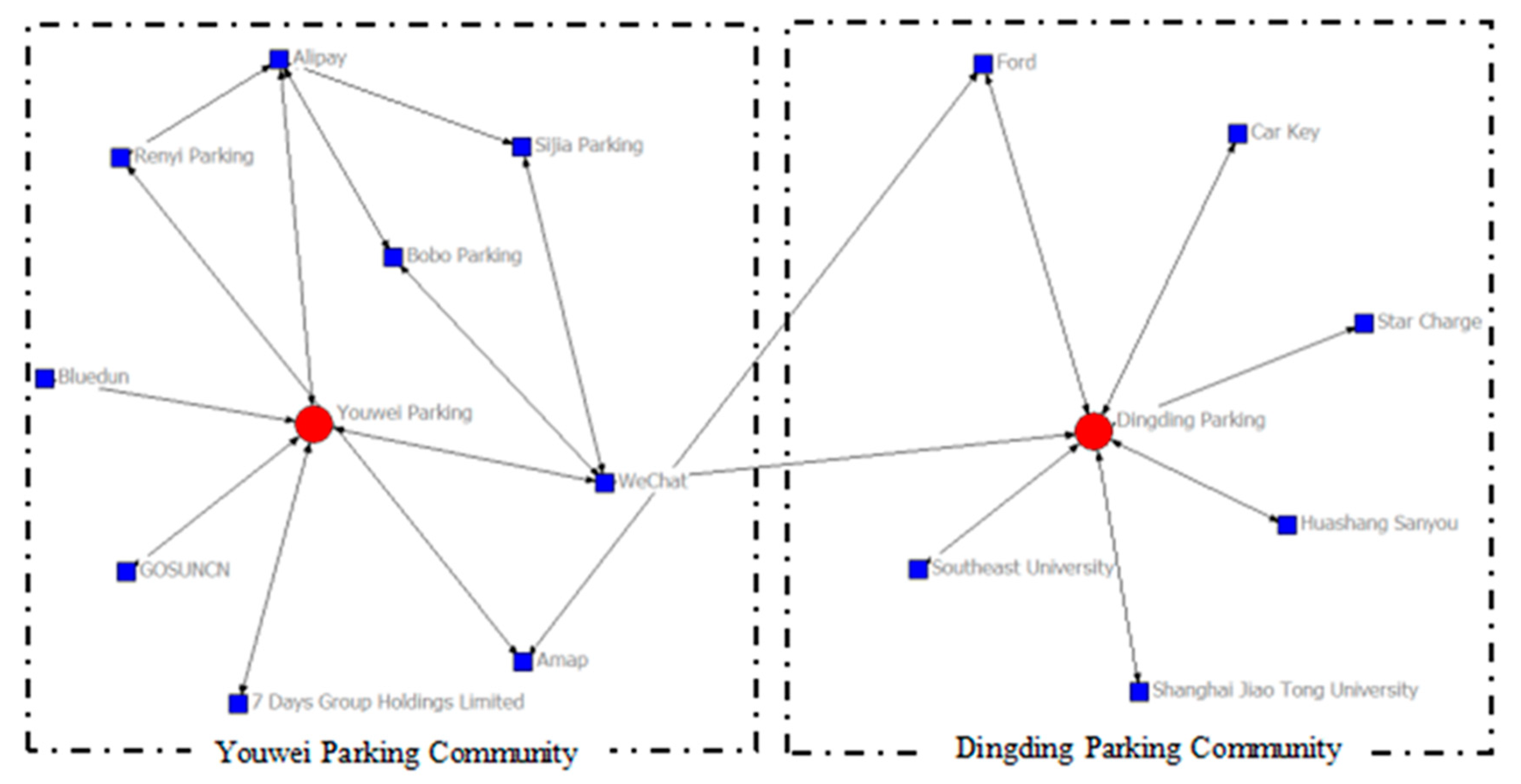


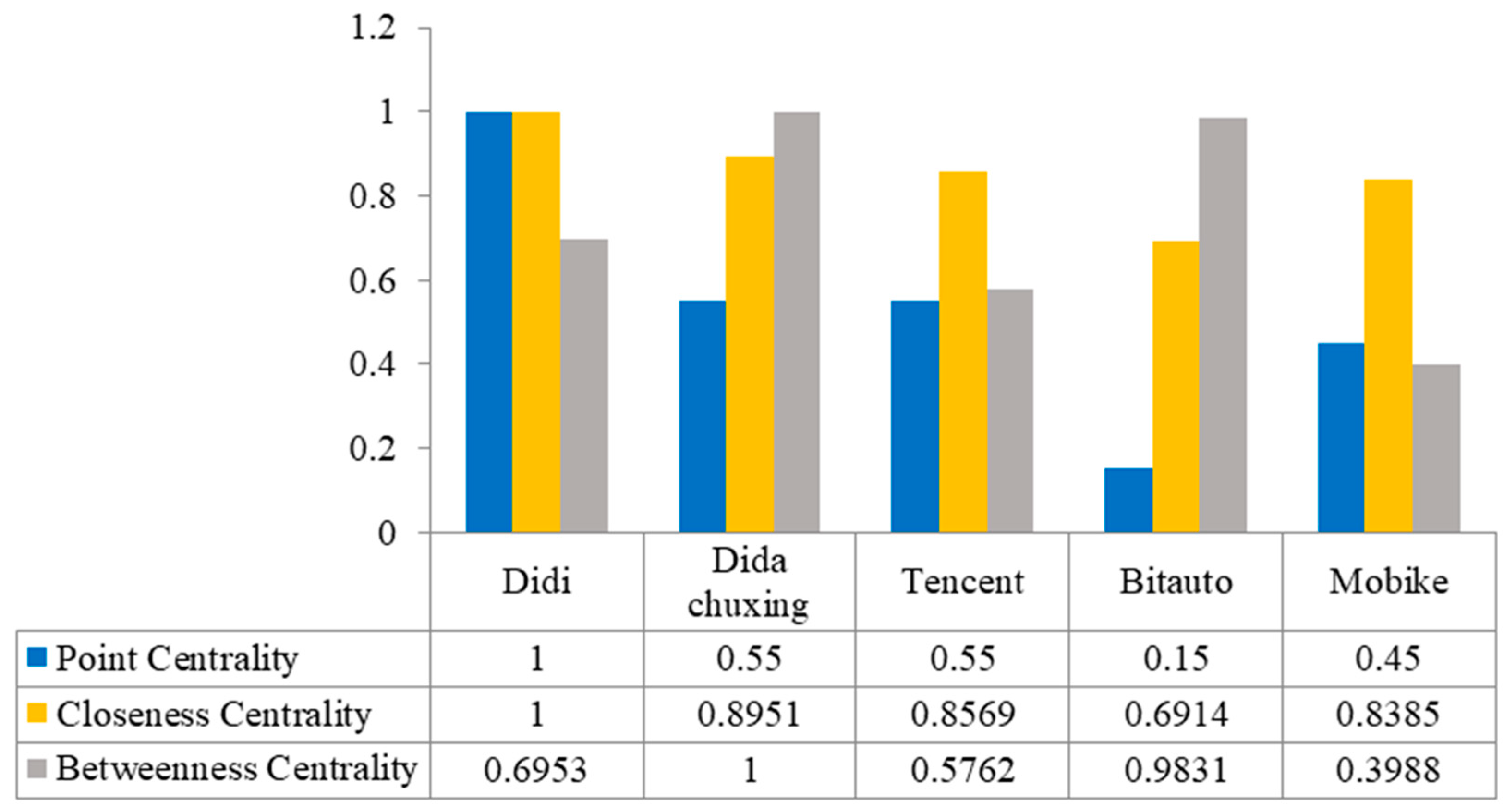
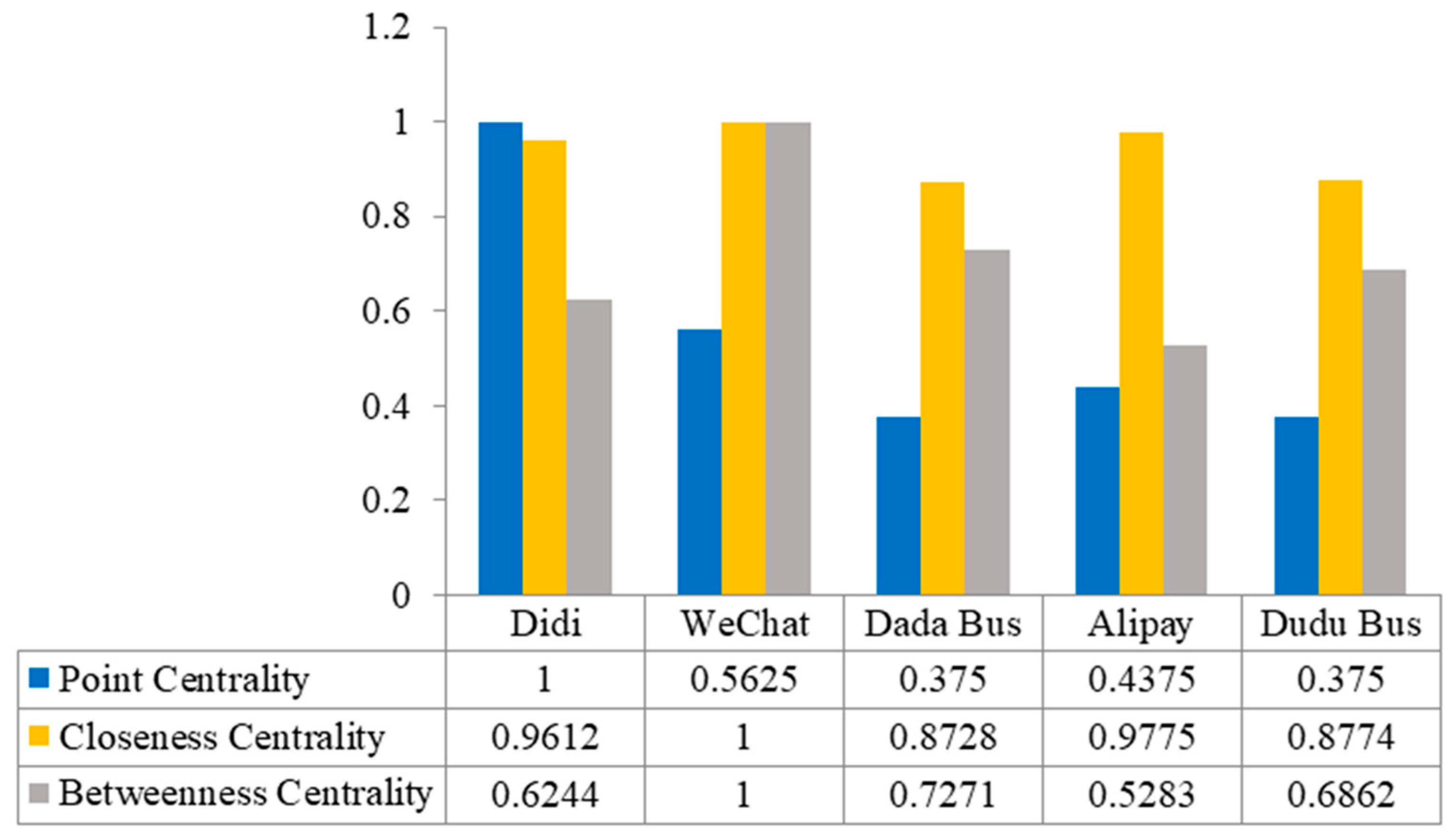

| Sub-Industry | Business Model | Representative |
|---|---|---|
| Sharing special car | It refers to the information matching and mutual selection between passengers and vehicles through the internet platform, with dedicated drivers to provide mobility reservation services | Didi Special Car, No 1 Special Car |
| Sharing rental car | It refers to the use of internet car rental platform by consumers to rent idle vehicles nearby, driving by themselves, so as to meet the short-term demand for mobility use | CAR.Inc. Wukong Zuche |
| Sharing carpooling | It refers to the use of internet carpooling platform to find idle vehicles and passengers who have the same or similar travel routes with the owner, and share the cost of travel | Didi Carpooling, Acting Appointment |
| Sharing bus | It refers to passengers customizing their routes through internet platforms to meet their needs for commuting or touring around | Didi bus Pig Bus |
| Sharing parking | It refers to the use of other people’s idle parking spaces by means of internet parking platform so as to effectively alleviate the difficulty in finding parking spaces in big cities | Youwei Parking, Dingding Parking |
| Dimension | Purpose | Sharing Economy Industrial Ecosystem (To Be Analyzed) | SNA (Analysis Methods) |
|---|---|---|---|
| Macro (Ecological environment matching density analysis) | Analyze the maturity of sharing economy’s ecological environment, to know the degree of resource support and influence from the industrial ecosystem for each enterprise | Ecosystem scale | Quantities of nodes and network connections |
| The degree of closeness between members in industrial ecosystem | Density index | ||
| The degree of industrial ecosystem cohesion | Centralization of a network | ||
| Meso (Ecological community matching subgroup analysis) | Analyze the operation of ecological community to know whether small groups exist and their characteristics | Industrial ecological community | Subgroup or clique analysis |
| Micro (Ecological niche matching centrality analysis) | Analyze the hub nodes to know whether leading enterprises and bridge enterprises exit, which play important roles in the development of industrial ecosystem | Identification of dominant species | Node centrality |
| Identification of key species | Double identifications of Burt Structural Hole and Betweenness Centrality |
| Industry | Sharing Special Car | Sharing Rental Car | Sharing Carpooling | Sharing Bus | Sharing Parking | |
|---|---|---|---|---|---|---|
| Scale | Nodes | 50 | 50 | 40 | 43 | 17 |
| Lines | 494 | 210 | 236 | 176 | 34 | |
| Density | 0.2016 | 0.0857 | 0.1513 | 0.0975 | 0.1250 | |
| Centralization | 0.1923 | 0.2246 | 0.3020 | 0.1932 | 0.4101 | |
| Sub-Group | Leader | Scale of Network | Ecosystem Diversity | Sharing Special Car Enterprises | Automobile Manufacturing Enterprises | Third-Party Platforms | Insurance and Venture Capital |
|---|---|---|---|---|---|---|---|
| Didi Community | Didi | 30 nodes | 4 types | 8 nodes | 5 nodes | 9 nodes | 8 nodes |
| Jingdong Community | Jingdong | 25 nodes | 4 types | 3 nodes | 7 nodes | 6 nodes | 9 nodes |
| Sub-Group | Leader | Scale of Network | Ecosystem Diversity | Sharing Rental Car Enterprises | Automobile Manufacturing Enterprises | Third-Party Platforms | Insurance and Venture Capital |
|---|---|---|---|---|---|---|---|
| CAR Inc. Community | CAR Inc. | 12 nodes | 4 types | 4 nodes | 1 node | 2 nodes | 5 nodes |
| Wukong zuche Community | Wukong zuche | 12 nodes | 4 types | 1 node | 2 nodes | 1 node | 5 nodes |
| eHi Car Services Community | eHi Car Services | 9 nodes | 4 types | 2 nodes | 1 node | 3 nodes | 3 nodes |
| iCarsclub Community | iCarsclub | 9 nodes | 4 types | 1 node | 2 nodes | 1 node | 5 nodes |
| Atzuche Community | Atzuche | 9 nodes | 3 types | 1 node | - | 2 nodes | 6 nodes |
| Baojia zuche Community | Baojia zuche | 7 nodes | 4 types | 1 node | 2 nodes | 1 node | 3 nodes |
| Sub-Group | Leader | Scale of Network | Ecosystem Diversity | Sharing Carpooling Enterprises | Automobile Manufacturing Enterprises | Third-Party Platforms | Insurance and Venture Capital |
|---|---|---|---|---|---|---|---|
| Didi Community | Didi | 26 nodes | 4 types | 5 nodes | 3 nodes | 8 nodes | 10 nodes |
| Dida Chuxing Community | Dida Chuxing | 12 nodes | 3 types | 2 nodes | - | 3nodes | 7 nodes |
| Acting Appointment Community | Acting Appointment | 5 nodes | 2 types | 1 node | - | - | 4 nodes |
| Sub-Group | Leader | Scale of Network | Ecosystem Diversity | Sharing Bus Enterprises | Automobile Manufacturing Enterprises | Third-Party Platforms | Insurance and Venture Capital |
|---|---|---|---|---|---|---|---|
| Didi Community | Didi | 28 nodes | 4 types | 3 nodes | 3 nodes | 12 nodes | 10 nodes |
| Dada Bus Community | Dada Bus | 8 nodes | 3 types | 2 nodes | - | 2nodes | 4 nodes |
| Dudu Bus Community | Dudu Bus | 8 nodes | 3 types | 1 node | - | 2nodes | 5 nodes |
| Pig Bus Community | Pig Bus | 3 nodes | 2 types | 2 nodes | 1node | - | - |
| Sub-Group | Leader | Scale of Network | Ecosystem Diversity | Sharing Parking Enterprises | Automobile Manufacturing Enterprises | Third-Party Platforms | Insurance and Venture Capital | Universities |
|---|---|---|---|---|---|---|---|---|
| Youwei Parking Community | Youwei Parking | 10 nodes | 2 types | 4 nodes | - | 6 nodes | - | - |
| Dingding Parking Community | Dingding Parking | 8 nodes | 4 types | 2 nodes | 3 nodes | 1 node | - | 2 nodes |
| Rank | Sharing Special Car | Sharing Rental Car | Sharing Carpooling | Sharing Bus | Sharing Parking |
|---|---|---|---|---|---|
| 1 | Jingdong | atzuche | Didi | Didi | Dingding Parking |
| 2 | Amap | UCAR | Dida Chuxing | ||
| 3 | Didi | eHi Car Service | Tencent | Dada Bus | Youwei Parking |
| 4 | Alipay | Baojia Zuche | Bitauto | Alipay | Alipay |
| 5 | Tencent | BMW | Mobike | Dudu Bus | Ford |
| Sharing Special Car | Sharing Rental Car | Sharing Carpooling | Sharing Bus | Sharing Parking | |
|---|---|---|---|---|---|
| Burt Structural Hole | Amap, Jingdong | Atzuche | Dida Chuxing | Dudu Bus Dada Bus | Dingding Parking |
| Betweeness centrality | Jingdong, Amap | Atzuche | Dida Chuxing | Dingding Parking |
© 2019 by the authors. Licensee MDPI, Basel, Switzerland. This article is an open access article distributed under the terms and conditions of the Creative Commons Attribution (CC BY) license (http://creativecommons.org/licenses/by/4.0/).
Share and Cite
Zhang, D.; Shi, Y.; Li, W. China’s Sharing Economy of Mobility Industry: From Perspective of Industrial Ecosystem. Sustainability 2019, 11, 7130. https://doi.org/10.3390/su11247130
Zhang D, Shi Y, Li W. China’s Sharing Economy of Mobility Industry: From Perspective of Industrial Ecosystem. Sustainability. 2019; 11(24):7130. https://doi.org/10.3390/su11247130
Chicago/Turabian StyleZhang, Danning, Yanshu Shi, and Weiwei Li. 2019. "China’s Sharing Economy of Mobility Industry: From Perspective of Industrial Ecosystem" Sustainability 11, no. 24: 7130. https://doi.org/10.3390/su11247130
APA StyleZhang, D., Shi, Y., & Li, W. (2019). China’s Sharing Economy of Mobility Industry: From Perspective of Industrial Ecosystem. Sustainability, 11(24), 7130. https://doi.org/10.3390/su11247130




